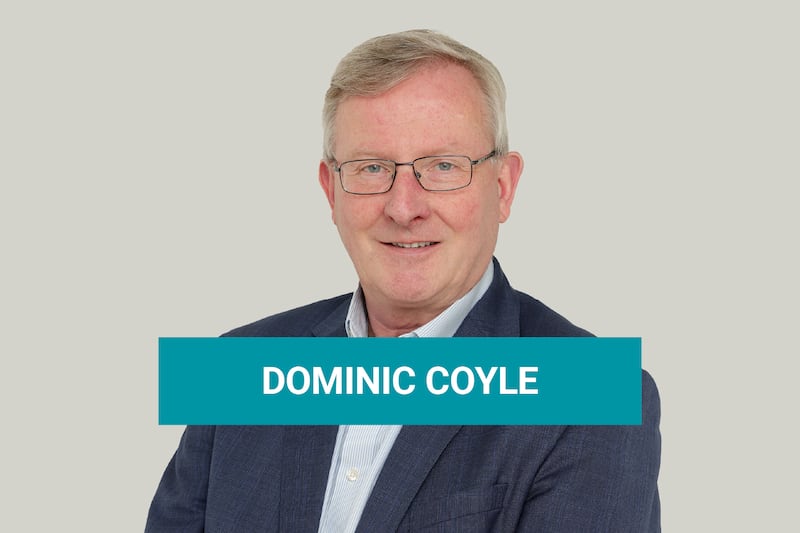What does the future hold for Fair City and The Late Late Show? For RTÉ, this is a €300 million question. For the staff involved, it’s a deeply unsettling one. These two shows are, it seems, destined to become the twin scenes of big industrial relations conflict at RTÉ.
At the heart of these internal disputes lies the entire history of the broadcaster. It was 64 years ago, in 1960, that construction began on RTÉ's television building, from where the fledgling Telefís Éireann began broadcasting The Late Late Show two years later.
This building, if RTÉ is to continue to use it, must be refurbished to meet environmental standards by 2030, as must a string of other dated, crumbling properties at Montrose that also happen to be listed as protected structures. The estimated cost of this project is, according to RTÉ, €300 million.
It’s not asking for the money. RTÉ director general Kevin Bakhurst says plunging funds into “revamping all these very nice, but quite old buildings on the site” would not be appropriate.
“We just can’t afford it and that’s not the right way to spend public money.”
As a result, RTÉ will swerve the upgrades, meaning both Fair City, its in-house soap opera, and The Late Late Show will have to relocate away from Donnybrook. Bakhurst has signalled that this will happen by the end of 2028, with the shows made somewhere else “in and around Dublin”.
A related development cited as a more immediate complication for the production of Fair City is that Cairn Homes will start building more than 600 apartments next door “relatively soon”, RTÉ understands. “You can’t film outdoors when there’s jackhammers going,” says Bakhurst.
Among members of RTÉ unions, the main sound they can hear right now is not jackhammers but alarm bells.
The director general has told them that the fate of the two shows is “not to save money” but the unavoidable consequence of the “prohibitive” investment that it would have to make in its infrastructure to keep them at Montrose.
But this has triggered much scepticism, in part because staff have already been briefed that there may be more than just a relocation in the pipeline here.

‘With airlines there’s always some volatility'
The programmes could be outsourced to independent production companies when they are relocated, Bakhurst says, or they could be made under a “hybrid model” involving a mix of both the independent sector and RTÉ employees. It is still exploring what the “best model” might be.
The independent sector has been sniffing about. Why wouldn’t it?
The Late Late Show is a television institution with no shortage of armchair producers. Ambitious production companies who think they know a thing or two about entertainment, and have the showreels to prove it, would naturally love the opportunity — and the contract — to put their stamp on it.
The well-titled Fair City, meanwhile, still pulls in decent audiences to both RTÉ One and the RTÉ Player. If it was made by an independent company, the production could benefit from the section 481 tax credit. With other partners on board, the rights would also be more likely to sell overseas. It wouldn’t necessarily have to remain a 24-minute soap with multiple episodes a week, though no one has said this out loud yet.
What we do know is that some production companies have had informal conversations with Bakhurst: “I know some independents are interested, in particular in Fair City. A few of them have already said it to me,” he says.
The RTÉ boss has expressed hope that a move to new studios or sites “will enhance the quality of the programmes” and stressed that “nothing we do is going to jeopardise them at all”.
But this isn’t really washing with unions at Montrose, where a sense of jeopardy is rife among staff who may be directly affected and, across the workforce, mistrust and frustration has become the default position.
They wonder if it is the cost of making Fair City — not least since several Workplace Relations Commission cases — that has forced the issue as far as the soap goes.
They’re unsure how, even allowing for the movable feast of construction start dates, a set could be rebuilt off-site before those Cairn jackhammers get going.
They’re not clear how, even accounting for the plan to reduce RTÉ's workforce by a fifth, or 400 people, by the end of 2028, its remaining employees will all fit into its Stage 7 building, as has been suggested.
They doubt whether the DNA of the Late Late could survive intact if the show was handed to an independent producer or even just moved off-site. And they’re angry that it seems as though more RTÉ jobs — especially those on the technical side, perhaps — could be on the verge of being sucked into the gig economy.
That independent production — which RTÉ has promised to increase, incidentally — is a fairly standard way of making television is unlikely to make this battle any less bitter and bloody.
The process looks set to be a protracted one, too. Bakhurst says “there might be more thoughts on how to do it” down the line. A compromise “hybrid” model would, on paper, seem easier to execute, and, in the case of the editorially sensitive Late Late, wiser — but that’s assuming RTÉ can afford compromises.
- Sign up for Business push alerts and have the best news, analysis and comment delivered directly to your phone
- Find The Irish Times on WhatsApp and stay up to date
- Our Inside Business podcast is published weekly - Find the latest episode here














